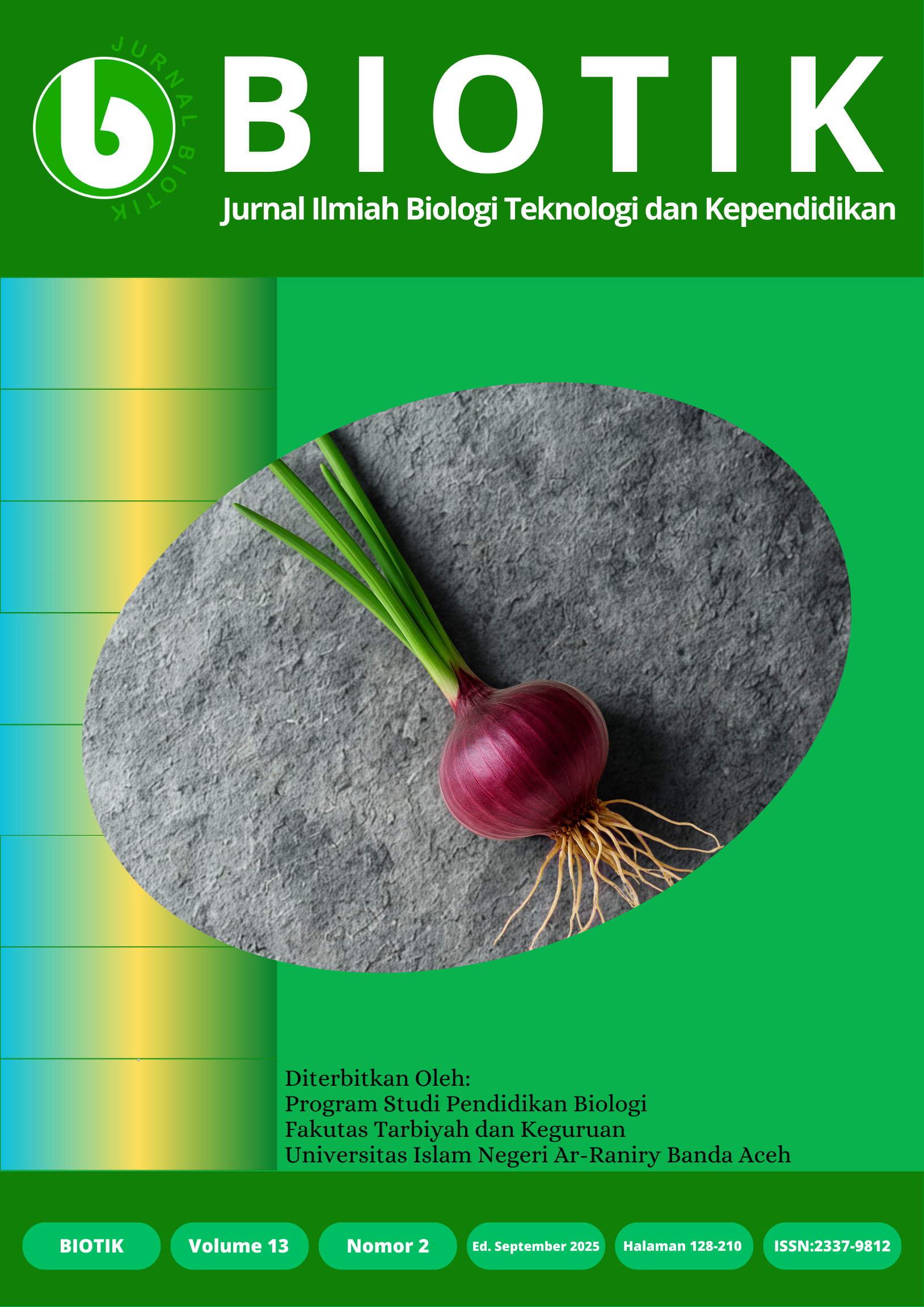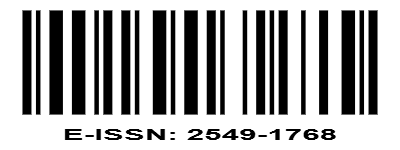Ethnobotanical Study and Conservation of Medicinal Plants Among Communities in Blang Pegayon, Gayo Lues Regency
DOI:
https://doi.org/10.22373/biotik.v13i2.31199Abstract
Blang Pegayon Subdistrict, Gayo Lues Regency, is one of the regions with high biodiversity and is renowned for its role in traditional medicine. This study aimed to identify the medicinal plant species used by local communities, the plant parts utilized, processing methods, and conservation strategies applied. The research population consisted of residents of Blang Pegayon Subdistrict, Gayo Lues Regency, with purposive sampling involving 48 respondents from six villages based on the presence of traditional medicinal plant use, including both key and non-key informants. Data were collected through semi-structured interviews, observation, plant identification using the Picture This application and the Plants of the World Online (POWO) database, and documentation. The data were analyzed descriptively. The findings revealed 51 medicinal plant species belonging to 29 families. The leaf was the most frequently used plant part (58%), while the most common processing method was pounding (26%). Conservation efforts were carried out through cultivation in home gardens (40%), planting in fields or farms (40%), and the use of wild plants from surrounding environments (20%). The results of this study are expected to provide valuable information for the development of future sustainable research.
Keyword: etnobotany; conservation; traditional; medicine plant.Downloads
Downloads
Published
Issue
Section
License
Copyright (c) 2025 Asni Maryam, Djufri, Dewi Andayani, Wardiah, Vivera Ruselli Puspa, Ucha Arief Pratama

This work is licensed under a Creative Commons Attribution-ShareAlike 4.0 International License.
Authors who publish with BIOTIK: Jurnal Ilmiah Biologi Teknologi dan Kependidikan agree to the following terms:
- Authors retain copyright and grant the journal right of first publication with the work simultaneously licensed under a Creative Commons Attribution License that allows others to share the work with an acknowledgement of the work's authorship and initial publication in this journal.
- Authors are able to enter into separate, additional contractual arrangements for the non-exclusive distribution of the journal's published version of the work (e.g., post it to an institutional repository or publish it in a book), with an acknowledgement of its initial publication in this journal.
- Authors are permitted and encouraged to post their work online (e.g., in institutional repositories or on their website) prior to and during the submission process, as it can lead to productive exchanges, as well as earlier and greater citation of published work.












